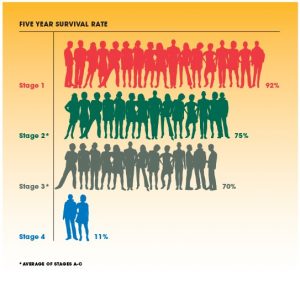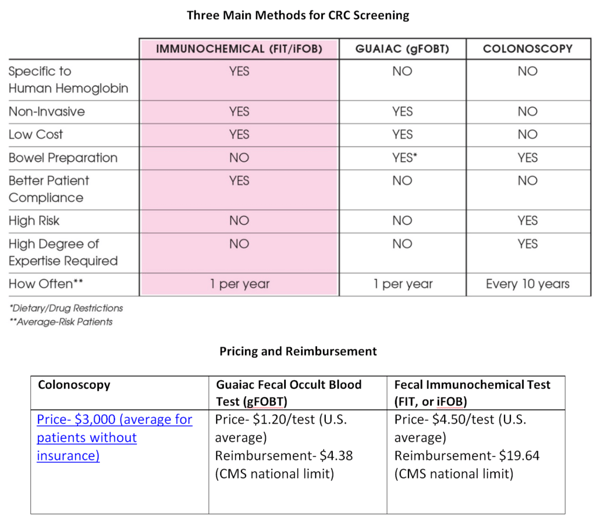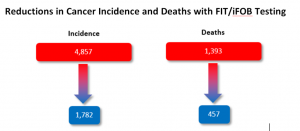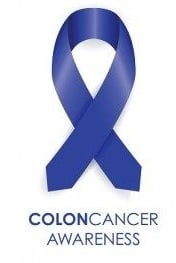 Colorectal cancer (CRC) is a leading cause of death for both men and women - and is projected to be responsible 50,630 deaths in 2018. Odds of developing CRC are about 1 in 20. In most cases, it grows slowly - with few if any symptoms in the beginning. Early detection, however, can make a significant difference in helping patients survive. For example, patients diagnosed with Stage 1 have a far greater chance of survival than those diagnosed at Stage 4.
Colorectal cancer (CRC) is a leading cause of death for both men and women - and is projected to be responsible 50,630 deaths in 2018. Odds of developing CRC are about 1 in 20. In most cases, it grows slowly - with few if any symptoms in the beginning. Early detection, however, can make a significant difference in helping patients survive. For example, patients diagnosed with Stage 1 have a far greater chance of survival than those diagnosed at Stage 4.
Effective Screening is a Big Part of Saving Patients’ Lives
New studies suggest that starting at age 45, adults without symptoms should have routine screenings for CRC and adenomatous polyps. The guidelines vary when it comes to how frequently someone should be screened, what age they can stop screenings, and the best method to use. Factors that may raise the risk level are family history, diet, and smoking.
Old Screening Methods Give Way to New Tests
Traditional methods have limitations and issues involving sensitivity, specificity, ease of use, and compliance.
While colonoscopy is the most common screening method, it is not available in all clinical settings, and many patients find the test preparation and invasive nature of the test itself so undesirable that they refuse to undergo it.
Fortunately, alternate screening methods can be used to screen for CRC, like those that detect the presence of fecal occult blood (FOB) in the patient’s stool (such as the Guaiac Fecal Occult Blood Test). However, it does have significant dietary restrictions in order to get accurate results - which can lead to poor patient compliance.
One good option is high-sensitivity immunochemical tests, like the Fecal Immunochemical Test (FIT) - also known as Immunochemical Fecal Occult Blood Test (IFOBT). Designed to detect human hemoglobin in a patient’s stool, these tests can be given annually to patients with an average risk level. When combined with adequate follow-up, they provide similar reductions in incidence and mortality as a colonoscopy.
Choosing What’s Right for Your Patient
To decide the right CRC diagnostic method for your patient, the 3 points to consider are:
- Accuracy – being sure the patient gets the right diagnosis
- Patient Compliance - ensuring the specimen is easy to collect and there are little or no dietary restrictions
- Cost - making sure the screening is affordable and cost-effective

 FIT/iFOB Test - The Bottom Line
FIT/iFOB Test - The Bottom Line
In a study that compared it to gFOBT, fecal DNA, flexible sigmoidoscopy and colonoscopy, the FIT/iFOB was the most effective and least costly. Looking at numbers, one study demonstrated that, during the lifetime of 100,000 people with average risk, FIT/iFOB testing once a year would drastically lower cancer incidence and death rates.
With its combination of accuracy, cost-effectiveness and better patient compliance (results in 5-10 minutes with less than 1 minute of hands-on time), the FIT/iFOB is a CRC screening method that can effectively help detect cancer and save lives.



Share Article